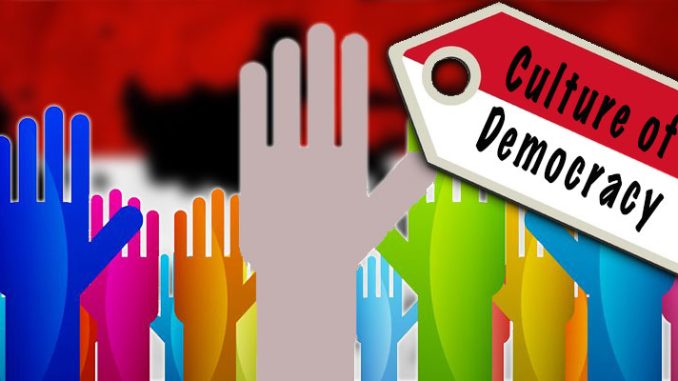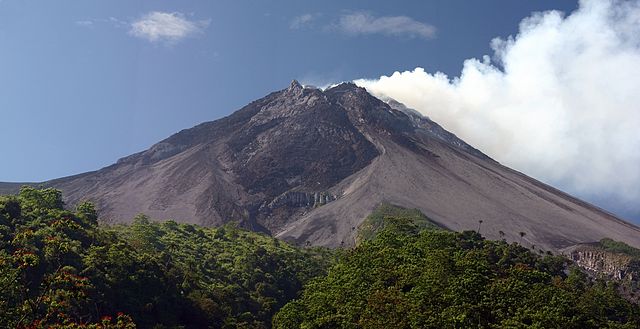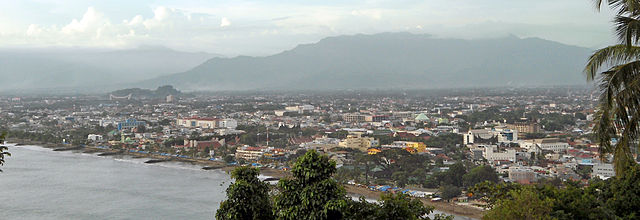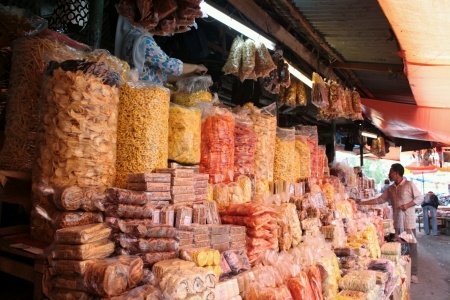
Problems of Differences
Although Kaliurang is generally known to be rural and homogenous, this does not mean that the people are free from the problems of differences. Differences in faith and religious schools are the main contentious issues that challenge social relations during recovery periods for a society that is mostly Javanese by ethnic group. In the past when churches and the Christian University in the city center were used as shelters for Kaliurang evacuees during an emergency phase, the issue of Christianization became hotly contested. The allegation of Christianization over evacuees was made by a group of hardline Moslems in Yogyakarta who then forced evacuees to leave the Christianity-affiliated shelters. Another related issue is that of a Moslem minority school, namely MTA (Majelis Tafsir Al-qur’an), which is different from the Moslems more common in Kaliurang. The introduction of MTA with different methods of worships than those in the community has caused friction in relations among neighbors. It is because the MTA followers refuse to participate in collective meetings that sometime contain religious activities. For the community, collective worship is not merely religious in nature, it is also social and impacts on the daily interaction between the two groups. As the community is still in the phase of recovery after the 2010 Merapi volcano eruption, the MTA issue has caused some hardship during the recovery processes.

In Padang, the post-disaster complexities raised were due to ethnic differences and these in turn were connected with religious differences. As the capital of West Sumatran province, Padang is relatively pluralistic with Chinese as the minority ethnicity in the greatest numbers compared to the other minority ethnicities (Javanese, Bataknese, Jambinese, and so forth). Although hardly reported as a place that experiences ethnic conflicts (compared to the other big cities in Indonesia such as Jakarta, Surakarta, Pontianak, North Moluccas, and Medan), Padang can hardly be identified as the safest city for ethnic minorities. Tensions with the Chinese frequently arise in regards to the issues of Christianization, church building, and so forth. To make everything worse, as a minority, the Chinese are stigmatized as rich, greedy, and materialistic. On the other side of the fence, as the native residents, Minang, are stigmatized as hypocrites, standoffish, and too strict in terms of their religious beliefs. When Padang was hit by the earthquake in 2009, the relations between Minang and Chinese became inflamed. Stoking this, the slow response of the local government was seen to be a deliberate act to discriminate against ethnic Chinese in aid distribution. The fact that the ethnic Chinese did not receive any help was attributed to them being already rich and flooded with aid from fellow Chinese from the other regions, and this strengthened the assumption that ethnic Chinese were discriminated against in the recovery phases. Although aid distribution is a matter of public policy, the issue has become influential in the daily relations of the Minang-Chinese.

Breaking Through the Separating Line
What is interesting to discuss is not only the problems, but also the way people dealt with them.
Apart from the fact that the issue of Christianization and the introduction of MTA create social tensions between the people, the Kaliurang community are accustomed with the practices of serawung, sengkuyung, and gotong royong. Literally, serawung is to socialize, to be open with neighbors and to welcome others. Serawung, practiced through, for instance openly interacting with neighbors and participating in monthly village meetings, is a way to break through the separating line between those with different religious backgrounds. Sengkuyung is to embrace the others to share mutual help. This is to lift up the burden of the others. Gotong royong is collective work. Ramijo, a Kaliurang resident explains in this way, “as the people’s needs to recover are vast, having good relations with neighbors is a pre-condition for recovery.” 1 Therefore, problems related to religious differences, as Ramijo admits, need to be disregarded so that people could rather focus on the reconstruction and rehabilitation processes. It is not a surprise therefore that we should now find Kaliurang residents already recovered. Furthermore, they have even built a community around volcano tourism, in addition to rapidly reconstructed villages, roads, houses, waste stalls, community stores, and cattle houses.
[pullquote]Minang people are not easily provoked. “They have trading relations with the Chinese, so destroying the Chinese for them would mean destroying themselves as well. [/pullquote]Similarly, although social tension between Minang and the Chinese is unlikely to complete dissipate, raso pareso has helped the relations between the two remain relatively good natured. This is thanks to traditional markets enabling an inter-connectedness between Minang, the Chinese, and the other ethnic groups because of their trading activities. 2 This interaction is likely to bring positive impacts on the relations between Minang and the Chinese. 3 In the case of the Padang earthquake in 2009, efforts to reduce social tension due to issues of discrimination against ethnic Chinese was apparent. Two large Chinese kongsi (cultural groups) tried to play a role in the recovery processes, this was in spite of the exclusion of the Chinese poor from receiving reconstruction assistance from the local government. Aid from the Chinese kongsi not only reached their own internal members, but also other ethnic groups like the Minang and Javanese that needed immediate medical supplies and food staples. Similarly, Minang residents that had traded with the Chinese prior to the 2009 earthquake distributed some help to them. Erniwati, a Minang shop owner, said she did not hesitate to share stuff with her Chinese business partner who suffered from the earthquake’s impacts. 4 In addition, in spite of the slow response of the government in reconstructing the market, economic activities managed to remain active, involving cooperation between Chinese retailers and Minang traders. When asked about this, Sirmis, a Minang trader, explained that cultural value, namely raso pareso, is very influential in the maintenance of Minang-Chinese relations. 5 Raso pareso means to feel what the others feel and to equip assumption with evidence and rational thinking. Although the Chinese community mostly has different religious beliefs from Minang, the Chinese are a necessary partner for Minang. Therefore, maintaining good relations is an ultimate need.
From these examples, we can see how working though issues and managing to cope with challenges at the grass roots can make a profound difference in social relations. Breaking though the separating line may have been done in a very simple way, but it may have crucial role to play when it comes to developing the culture of democracy for the people.
Laila Kholid Alfirdaus
The author is faculty member at Government Department, Faculty of Social and Political Science, Diponegoro University, currently enrolled in Inter-Religious Studies (PhD Program), Indonesian Consortium for Religious Studies (ICRS), Post-Graduate School, Gadjah Mada University, Yogyakarta, Indonesia. The article is a summary of research report on “Cultural Practices and Local Democracy Strengthening in the Situation of Natural Disasters: Kaliurang, Yogyakarta, Post-2010 Merapi Volcano Eruption and Padang, West Sumatra, Post-2009 Earthquake”, funded by South-South Institute (IDEAs, CLACSO, and CODESRIA). The author thank Abdul Rohman, Budi Baskoro, Nafisah and Ahmad Shofiyudin for the supports during the fieldwork.
Kyoto Review of Southeast Asia (issue 15), Young Academics Voice, June 2014
Notes:
- Interview in Kaliurang, Yogyakarta, 12 October 2013. ↩
- Erniwati 2011, Cina Padang dalam dinamika masyarakat Minangkabau: dari revolusi sampai reformasi, Dissertation, History Program, Faculty of Cultures, University of Indonesia. ↩
- When other big cities suffering from mass violence during the political transition at the end of 1990s, Padang was relatively safe lacking the social tensions that were clearly palpable in many other big cities in Indonesia. Referring to the time, Susi, a female Chinese business owner, interviewed in Padang, 5 November 2013, said that her Minang colleagues protected her and her fellow Chinese during the hard periods of political transition. Confirming this, Erniwati, another respondent, interviewed 20 November 2013, stressed that the Minang people are not easily provoked. “They have trading relations with the Chinese, so destroying the Chinese for them would mean destroying themselves as well.” As a result, compared to the other big cities in Indonesia, Padang was relatively safe from mass violence during the political transition. Yet there are still concerns that Minang and the Chinese’s residential areas are still segregated and the religious differences remain as a contentious issue to discuss. Despite this, the non-violence during the hard period at the end of 1990s’s political transition is significant and important to take into account. ↩
- In an interview, 27 June 2010. ↩
- In an interview in Padang, 18 November 2013. ↩
